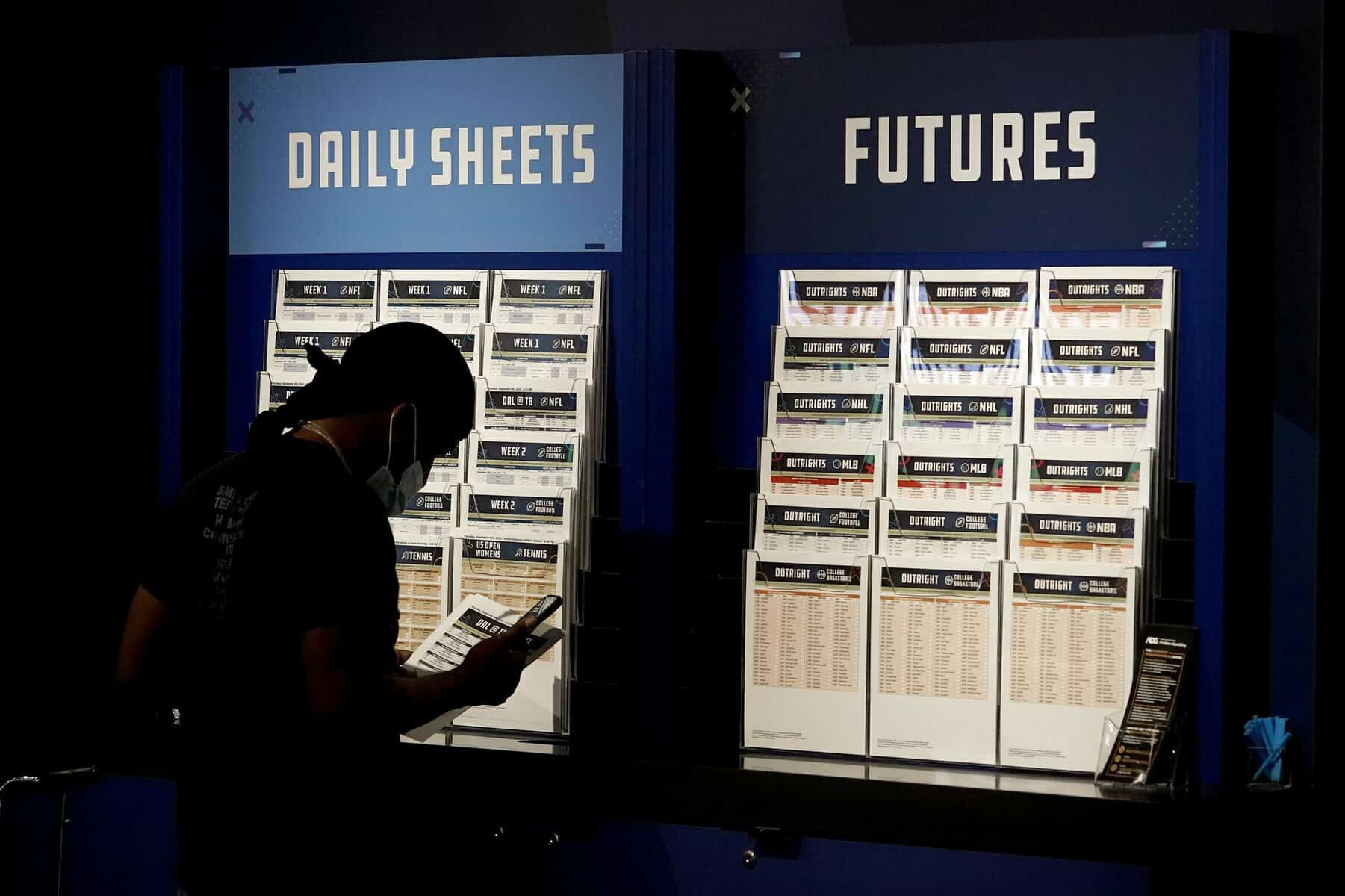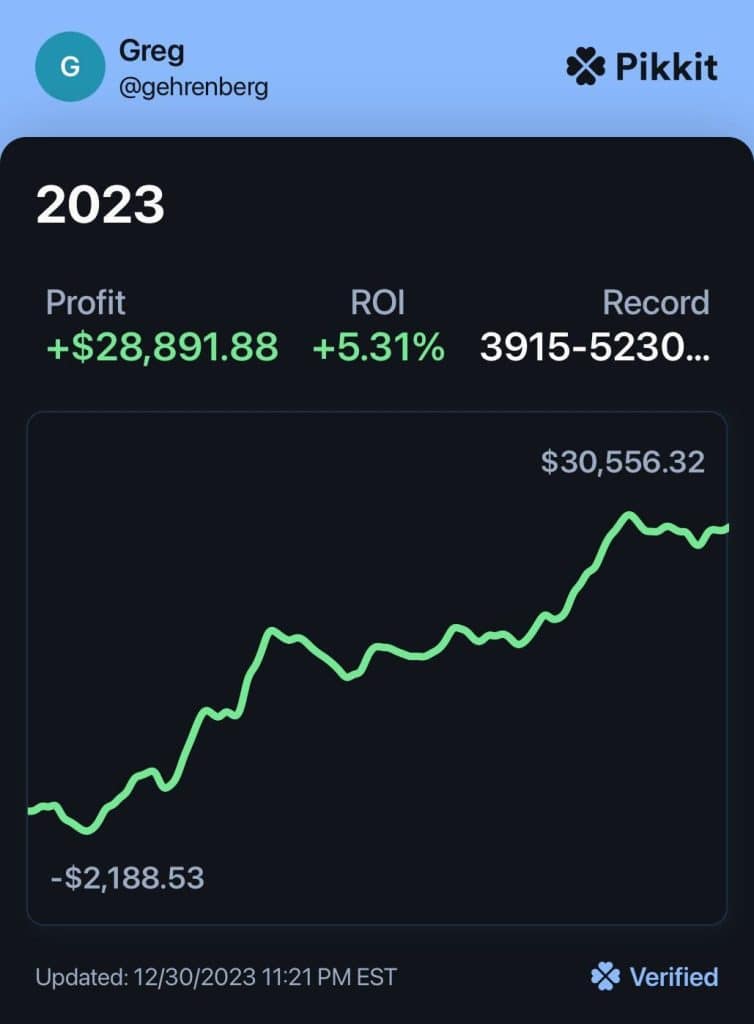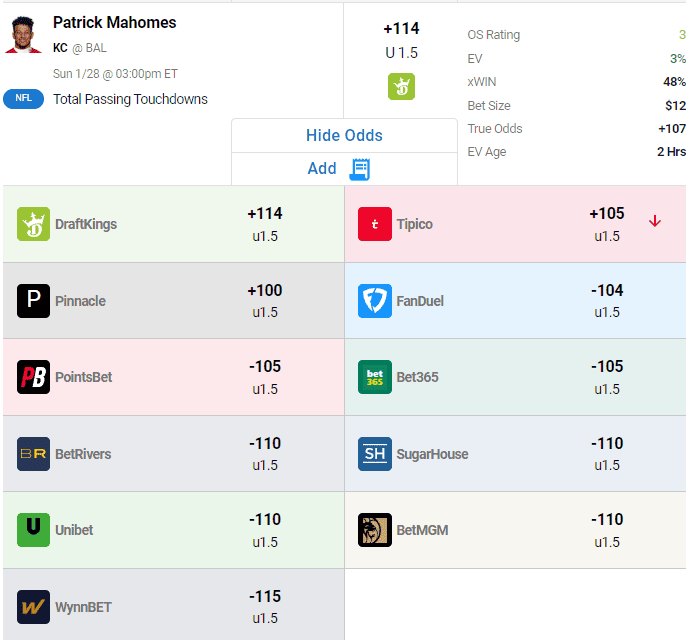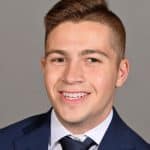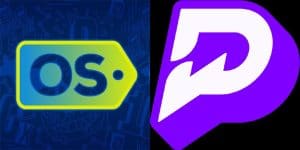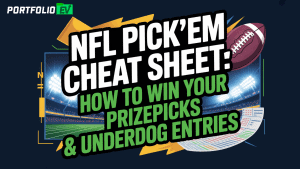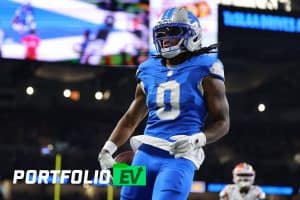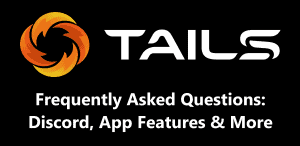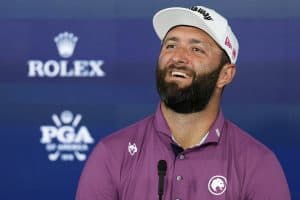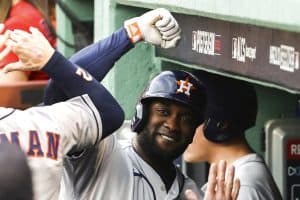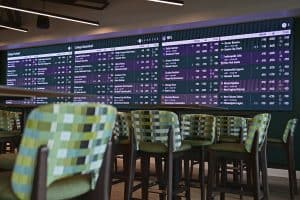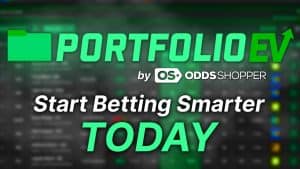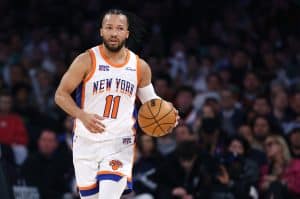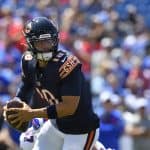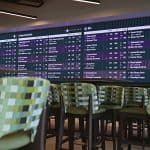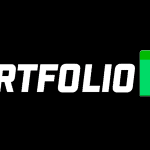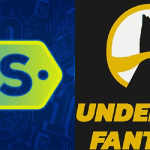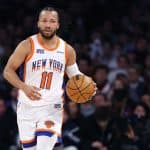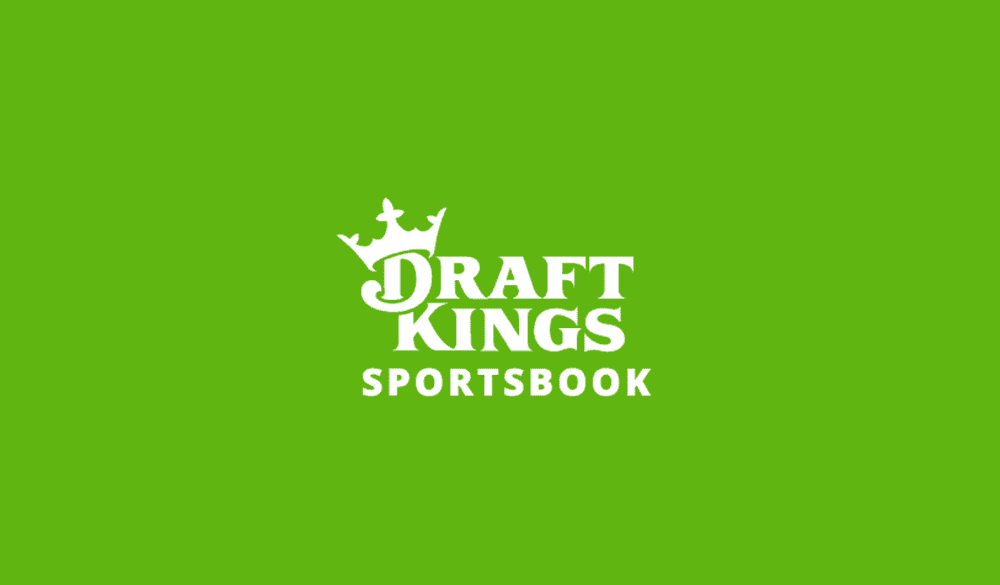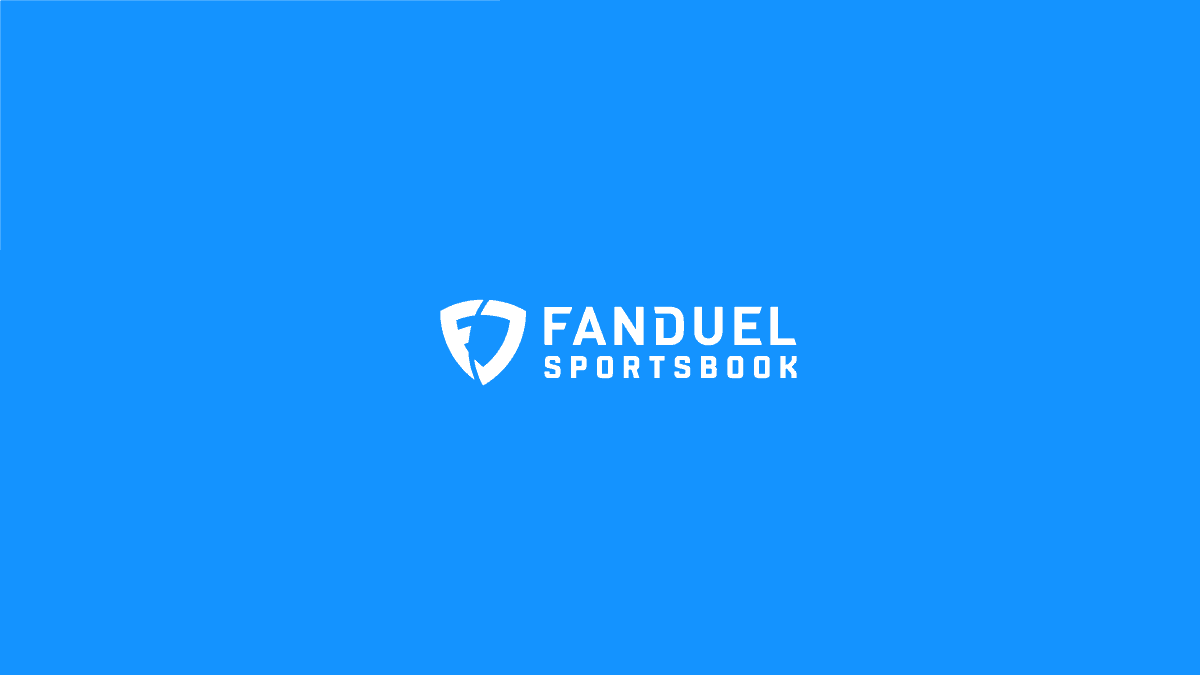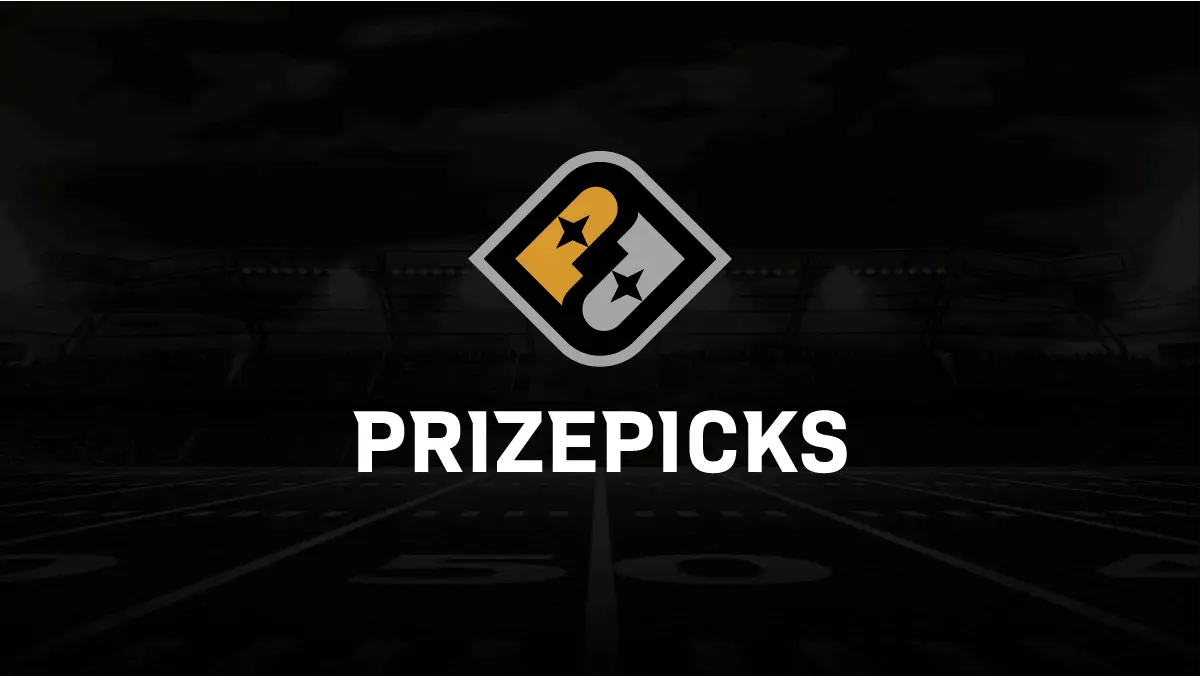The world’s most profitable sports bettors know that the best way to make money from sports betting is by placing a large number of bets. While you may get lucky and score a 15% return on your first few wagers, you’re unlikely to maintain that pace forever. Today, let’s talk about why you should be placing more bets — but for less money — if you’re wondering how to profit from sports betting. Make sure to check out the rest of our Betting 101 articles, including our bankroll management tips.
Why You Should Place More Bets: How to Profit from Sports Betting
1. (Sample) Size Matters | How to Profit from Sports Betting
Let’s say you have a bankroll of $1,000. Should you: (a) bet everything on one market, (b) bet $100 on one market — and, if you lose, plan to bet $250 to make your original stake back plus a profit — or (c) spread your action across multiple markets on different days. If you think you’ve found a “lock,” you might be attracted to the first option. If you’ve heard of martingale systems, you probably recognize the second.
However, locks aren’t real, and martingale betting is a great way to go broke. The best of these options is the third, but I hope to offer you more than the trite colloquialism about eggs and a basket — let’s use some numbers to prove my point. Here are OddsShopper analyst Greg Ehrenberg’s betting results from using our tools:
As of December 30, 2023, Greg was up $28,891.88. Good job, Greg! But note that while Greg has made money — a lot of it, in fact — there are plenty of ups and downs in his chart. Greg actually started his sports betting journey off by losing $2,188.53. He quickly recovered those losses, but if he hadn’t used responsible bet sizing, he would not have gotten the coin back.
Also note Greg’s record: 3195-5230. Despite winning only 42.8% of the time, Greg has turned a profit. This speaks to the value of targeting inefficient lines that sit well into the plus money. During the MLB season, you’ll often find inefficient home run bets popping up in OddsShopper’s tools, and those account for several of Greg’s most profitable picks.
If Greg had called it quits (or run out of money) after losing $2,000-plus, he wouldn’t have made the subsequent almost-$30,000 using our tools. That profit was only possible because Greg understood that sample size matters. Over the long haul, he was placing profitable wagers, and the profits eventually came.
In sports betting, you can only build up a meaningful sample size by placing more bets, and to place more bets, you’ll need money in your accounts. While you might not be thrilled with the prospect of placing 10 $10 straight bets in a night, that’s a better long-term strategy than placing one $100 parlay you hope will pay off your student loans. Trust me, as a recent graduate, I wish it were that easy.
Examples From Our Subscribers | How to Profit from Sports Betting
2. Bet More, Risk Less | How to Profit from Sports Betting
With me so far? If you want to be like Greg, you’re going to have to place more bets, and likely with less money than you’re currently risking. That may sound boring, and in all honesty, sometimes it is.
Waiting for a $50 payout if LeBron James doesn’t score 30 points isn’t close to the same feeling as sweating out a $20,000 payout if KaVontae Turpin scores the final touchdown in your parlay — but you’re far likelier to bank that $50, which, over time, you can turn into another $50 — than to bank the $20,000.
With so many games to handicap and athletes to follow, OddsShopper’s tools can help you find those +EV spots to help you grow your bankroll over the long haul.
How to Use OddsShopper’s Model
If you think sports betting is all about knowing more about sports than the books do, you’re only playing half the game. You don’t need to know much about sports to be a profitable sports bettor. There are two main methods for profitable sports betting, projections-based approaches or market-based approaches, and the latter approach doesn’t require any knowledge beyond how sportsbooks work. Both systems can lead you to an estimate of a bet’s probability of winning.
Models centered on projections are often easier for beginning bettors to understand. They use data from on the field to estimate the probability of an outcome for a player or team. ESPN’s win probability estimates are an example of how a projection-based model could work. These differ from market-based models, which use data unrelated to the sport entirely. These models assume that some odds (and some action wagered on those odds) are sharper than others due to where they’re listed. Pinnacle, often considered a sharp book due to its lower hold percentage and higher limits, is a source of such odds for exactly those reasons. The house would lose more with an inefficient market than other sportsbooks — which we can use to our advantage.
Being able to identify sharp books or understand how much of an edge the disparity between odds is worth is difficult. That’s why OddsShopper’s sports betting model is so useful. It generates true odds — the probability of a given bet winning that we discussed earlier — to calculate how much of an edge you have as a bettor along with an estimated bet size for each wager based on your bankroll, a number you can toggle to fit your needs. Let’s dive into an example wager to break down how our product team explains it:
Bet Size: The recommended bet size as a percentage of your bankroll. This metric is based on a fractional Kelly Criterion approach that leads to a reasonable balance of minimizing risk of ruin while maximizing potential reward.
EV: An abbreviation for “expected value,” this metric estimates the long-term profitability of a wager by taking into account the probabilities/payouts associated with each potential outcome.
xWin: The probability of winning the bet implied by the Sharp Sportsbook Algorithm true odds.
OS Rating: The OS rating provides a rating for each +EV bet. An OS rating above 20 signifies an exceptional bet. Ratings between 10 and 20 are highly favorable bets. Finally, a rating between 0 and 10 indicates a solid bet. We factor in the EV, expected win, bet size, and negative geometric drag to calculate this rating.
Hold: The synthetic hold across the entire market, which is the loss a bettor would sustain if he bet both sides of the market to win equal amounts. The larger the hold, the more difficult it is to beat that market. While uncommon, a negative synthetic hold is possible. Negative synthetic holds are arbitrage situations (also known as arbs) where a bettor can guarantee a profit by booking both sides.
True Odds: Odds that represent the real statistical probability of any outcome in a particular sporting event.
OddsShopper’s NBA ROI | How to Profit from Sports Betting
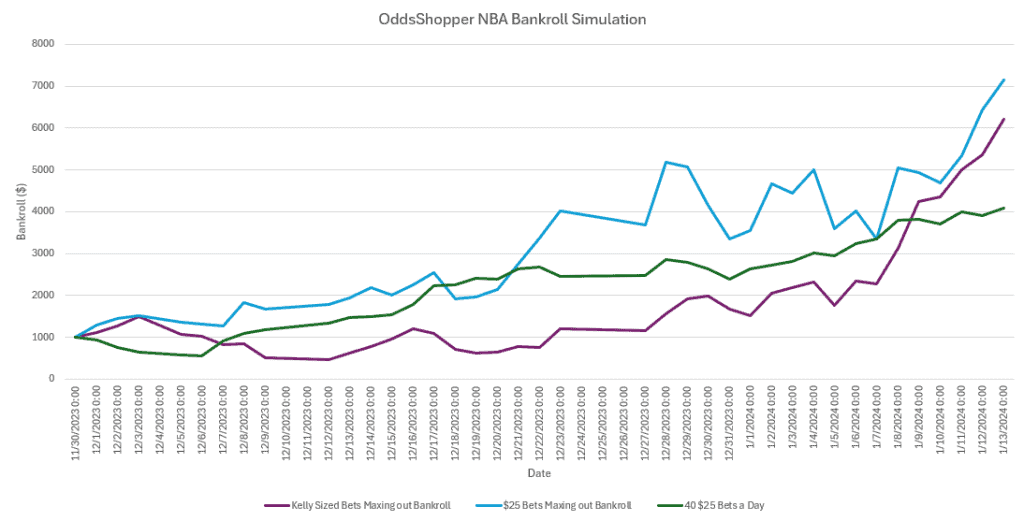
In this simulation of our NBA betting tools, bettors who maxed out their bankrolls profited MORE than those who placed only 40 bets, but all still secured a significant positive return.
OddsShopper’s Sports Betting Tools & Tips
New to sports betting? OddsShopper’s selection of Betting 101 articles is here to help. We even have a parlay builder and our guide to parlay betting. Check out our guide to finding positive expected value (+EV), and you can unlock more +EV plays by signing up for OddsShopper Premium!
